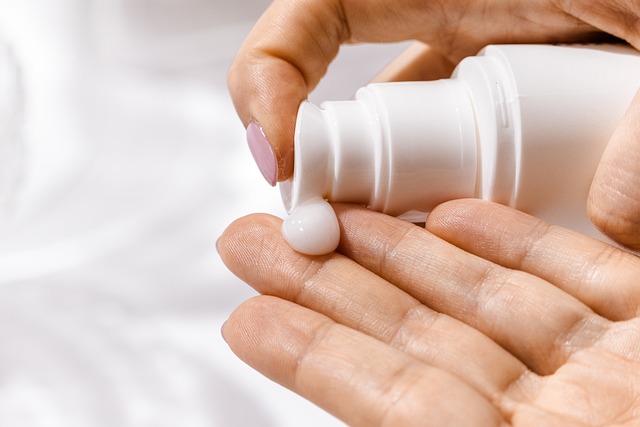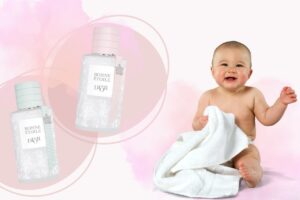Today, when we have countless options for makeup and cosmetics and have reached the point of hyperproduction, it is time to turn to healthier alternatives for our planet.
That’s why I will explain here which makeup is healthier for you and the planet. I have been practicing an eco-friendly beauty routine for 10 years, and it just blended into my everyday life. In the beginning, you might face some challenges, but after a while, you will get used to it and it will become a habit.
What Does ” Eco-Friendly” Mean in the Beauty Industry?
First, I want to explain the terminology, because many confuse terms like vegan, eco-friendly, or organic. Eco-friendly beauty refers to using products and routines that have minimal environmental impact, focusing on sustainability, ethical sourcing, and non-toxic ingredients.
It supports products made from natural, organic ingredients, packaged in recyclable or biodegradable materials, and produced through processes that reduce carbon footprint and water usage.
Switching to Eco-Friendly Beauty Routine
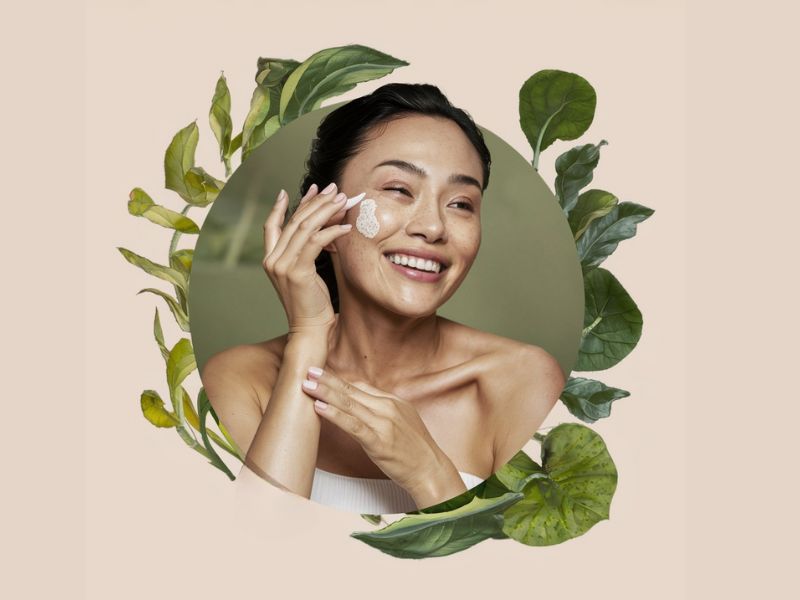
Switching to an eco-friendly beauty routine requires awareness of the benefits it brings. It changed my daily habits and the products I used. It started with a deep dive into the inventory of my personal care items, where I was researching each product’s ingredients, understanding that most of my cosmetics and makeup were made of harmful chemicals and that the package was not biodegradable.
Then I thought if I have so many cosmetics that are not healthy for our planet, how much is it when it is added up at the level of the whole world?
How to Read Product Labels?
Learning how to read and interpret product labels became my next challenge. I familiarized myself with various certifications—USDA Organic, EcoCert, and Cruelty-Free—as these labels could guide me toward more responsible choices. So when searching for beauty products next time, check out if they have some of these signs on the packaging.
Also, I learned to be aware of “greenwashing,” where products are marketed as eco-friendly without sustainability practices behind them.
Identifying eco-friendly ingredients became a routine part of my shopping process. I started to avoid products containing microplastics, parabens, sulfates, and phthalates, which could harm entire ecosystems and potentially impact human health. I switched to products that have natural, biodegradable ingredients and minimal, recyclable packaging.
The transition wasn’t just about products. It was a shift in how I approached beauty and care, with a deep understanding of my personal impact on the planet. I switched also to multi-use products to minimize waste.
Synthetic Ingredients to Avoid
Natural ingredients come from plants, minerals, and other natural sources, and they are often more compatible with our bodies and the environment. In contrast, synthetic ingredients are man-made and can be harsher on the skin and more damaging to ecosystems when they wash off our bodies and into waterways. From my knowledge, these are the things you should avoid the most:
- Mineral Oils: These oils are derived from petroleum, are not biodegradable, and can create a film on the skin that blocks its ability to breathe and release toxins. Also, they are not environmentally friendly because they contribute to the consumption of non-renewable resources.
- Silicones: They are mostly used to make products feel silky and smooth, and many of them are not biodegradable, which affects the underwater ecosystems, risking marine life.
- Synthetic Fragrances: These can contain thousands of chemical components, many of which can cause skin irritation, allergies, and even hormonal imbalances. From an environmental perspective, they can be toxic to aquatic life and contribute to water pollution.
Recognize Eco-Friendly Ingredients
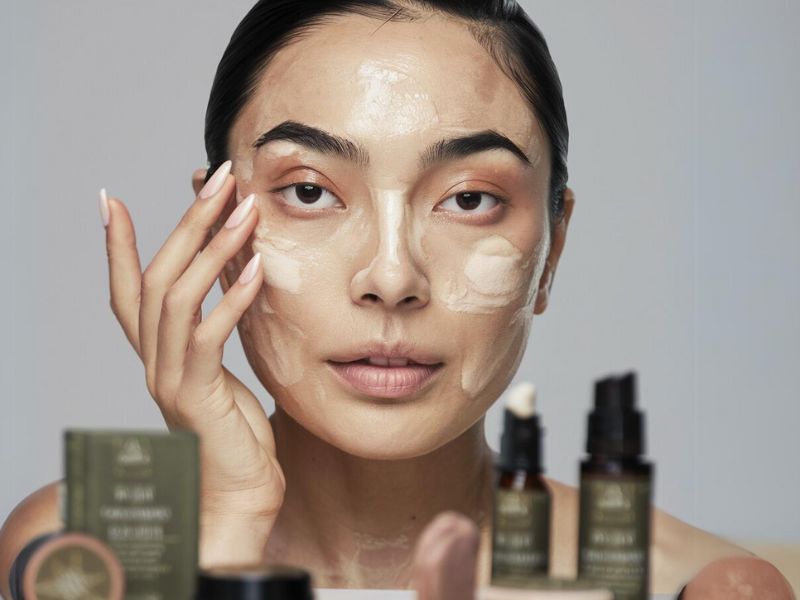
When I am searching for eco-friendly products, I prioritize natural and biodegradable, meaning they can break down naturally without harming the environment. Here are some key ingredients to look for:
- Plant-Based Oils: Coconut oil, shea butter, jojoba oil, and argan oil are excellent moisturizers, beneficial for the skin, and are minimally processed.
- Essential Oils for Fragrance: Natural essential oils derived from plants can provide beautiful scents without the harmful effects of synthetic fragrances.
- Natural Exfoliants: Instead of microbeads (which are plastic), look for natural exfoliants like oatmeal, coffee grounds, or sugar that gently remove dead skin cells without polluting waterways.
- Herbal and Floral Extracts: Ingredients like aloe vera, chamomile, and green tea offer soothing and antioxidant properties without the environmental impact of synthetic additives.
Environmental Impact
To be able to understand and make yourself aware of your impact on the planet, you need to learn how actually beauty cosmetics affect our environment. I didn’t switch to eco-friendly cosmetics overnight, it was a long journey of understanding the impact and that I, as an individual have the power to make some changes and be a role model for my friends and family members.
From the manufacturing process to the disposal of packaging and the ingredients, non-eco-friendly products have many negative impacts on the environment, such as:
Pollution and Waste
The most visible impact is the generation of pollution and waste. Beauty products packaged in single-use plastics, which are seldom recycled, contribute to the abnormal amounts of plastic waste filling landfills and polluting oceans.
This does not affect only marine life but also contributes to the broader problem of plastic pollution, which can take hundreds of years to decompose.
Harmful Chemicals
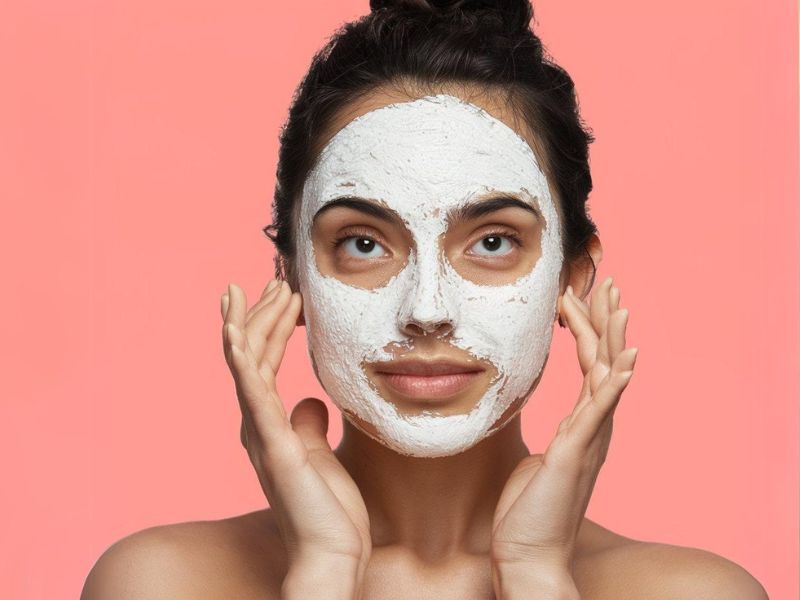
Many of these products contain harmful chemicals that can have an impact on the environment when washed down our drains. Ingredients like parabens, phthalates, synthetic fragrances, and certain sulfates can end up in waterways, affecting aquatic ecosystems and harming wildlife.
For example, chemical sunscreens have been found to bleach coral reefs, contributing to their decline.
Water Usage
The beauty industry is also a significant consumer of water. The production of non-eco-friendly products often requires large amounts of water. The overuse of water resources in beauty product manufacturing places additional stress on already vulnerable water systems.
Carbon Footprint
The carbon footprint is associated with the production, transportation, and disposal of beauty products. The extraction of raw materials, the energy used in manufacturing, and the emissions from transporting products globally contribute to greenhouse gas emissions, exacerbating climate change.
Biodiversity Loss
The sourcing of ingredients for non-eco-friendly beauty products can lead to habitat destruction and biodiversity loss. The demand for certain ingredients can lead to deforestation, destruction of ecosystems, and the displacement of wildlife.
This affects the plants, animals, local and global ecosystems. It can also be harmful to humans, as the migration of wild animals can lead to villages and towns.
Soil and Water Contamination
The agricultural practices involved in producing some of the natural ingredients found in beauty products can contribute to soil degradation and water contamination. Pesticides and fertilizers used in cultivation can leach into the ground and waterways, affecting soil health and water quality.
Health Impacts
Beyond their environmental impact, the chemicals in non-eco-friendly beauty products can have health implications for humans. Exposure to certain harmful chemicals has been linked to health issues, including hormonal imbalances, allergies, and even some forms of cancer.
I have a skin allergy related to some sorts of parabens that are used in deodorants. Our skin is simply evolutionally adapted to natural products, rather than chemicals.
My Favourite DIY Eco-friendly Beauty Recipes
Of course, besides looking for an eco-friendly certificate on cosmetic products, you can also make your own cosmetics at home, which is the most ecological option. Since I have done these practices for a very long time, I have dozens of recipes, but I will share my favorite ones, which have been part of my weekly routine for years.
1. Avocado and Honey Moisturizing Face Mask
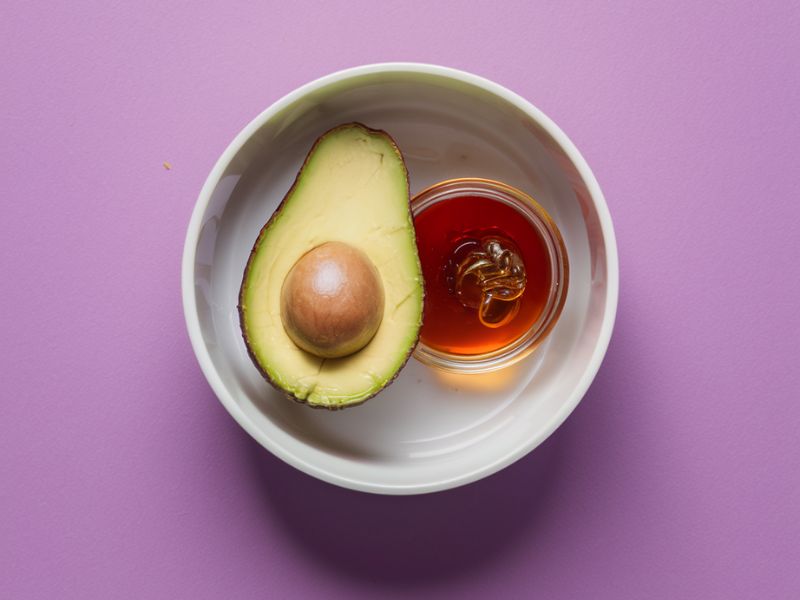
Ingredients:
- ½ ripe avocado
- 1 tablespoon of raw honey
- 1 teaspoon of coconut oil (optional, for extra hydration)
Instructions:
- Scoop out the avocado half and mash it with a fork until it reaches a smooth consistency.
- Add the raw honey (and coconut oil, if using) to the mashed avocado. Stir the mixture until all the ingredients are well combined.
- Cleanse your face thoroughly before applying the mask. Using your fingers or a brush, apply the mask evenly over your face, avoiding the eye area.
- Let the mask sit on your skin for about 15-20 minutes. This allows the hydrating and soothing properties of the avocado and honey to penetrate your skin.
- Rinse the mask off with lukewarm water and pat your face dry with a clean towel. Follow up with your regular moisturizer for added hydration.
This mask is perfect for dry or mature skin, thanks to the hydrating properties of avocado and honey, and the optional coconut oil for an extra moisture boost.
2. Coffee and Sugar Body Scrub
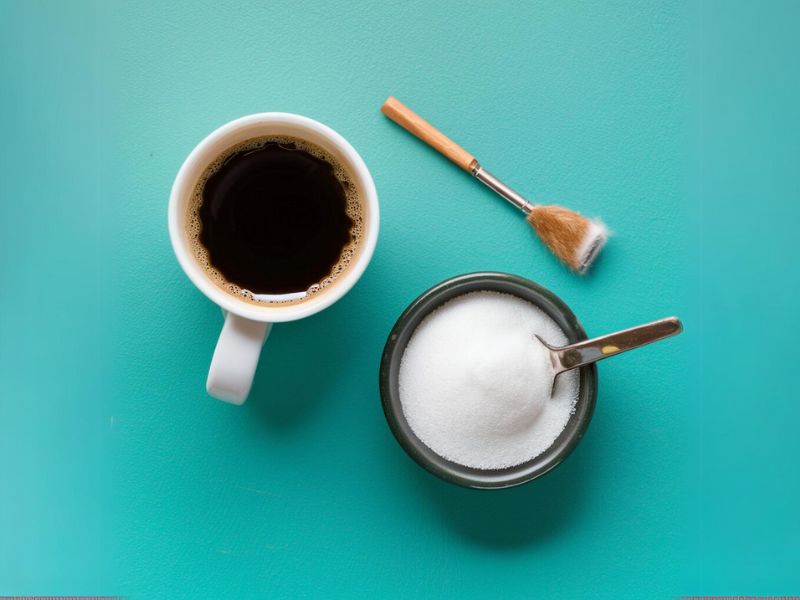
Ingredients:
- ½ cup ground coffee (fresh or used grounds from your morning coffee)
- ½ cup brown sugar
- ¼ cup coconut oil, melted
- 1 teaspoon vanilla extract (optional, for fragrance)
Instructions:
- In a bowl, mix the ground coffee and brown sugar.
- Pour the melted coconut oil over the dry ingredients. Add the vanilla extract if desired. Stir the mixture until everything is thoroughly combined.
- Transfer the scrub to an airtight container. If stored properly, it can last for several weeks.
- During your shower, apply the scrub to your body in a circular motion, concentrating on rough areas like elbows, knees, and feet. The scrub exfoliates dead skin cells, leaving your skin smooth, while the caffeine helps with tightening the skin and reducing the appearance of cellulite.
- Rinse off with warm water and pat your skin dry. The coconut oil leaves a moisturizing layer on your skin, so you may not need additional lotion afterward.
This coffee and sugar body scrub is not only a great way to recycle used coffee grounds but also an excellent exfoliator and skin tightener, thanks to the natural properties of its ingredients.
By using simple DIY beauty recipes and natural ingredients, each of us can make a significant impact. These actions not only benefit our planet by reducing waste and avoiding harmful chemicals but also nurture our bodies with healthier, more natural care. Remember, the journey toward sustainability is ongoing and filled with opportunities to learn, grow, and share.
Your choices inspire change, contributing to a larger movement dedicated to preserving the beauty of our world for future generations. Let’s continue to explore, advocate, and thrive in our pursuit of eco-friendly beauty.

